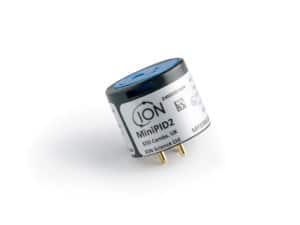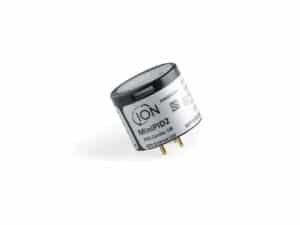Application Articles
The Application Articles provide detailed information on how ION Science gas detectors are being used within a variety of industries and applications.
Home » Gas and Leak Detectors » Resource Center » Application Articles
The Application Articles provide detailed information on how ION Science gas detectors are being used within a variety of industries and applications.
The goal of an effective health and safety plan on offshore oil and gas facilities should be more frequent or even continuous monitoring, offering assurances that zero contamination readings really do mean zero contamination.
Environmental pressures and subsequent legislation to control hazardous substances have seen a sharp decline in the use of mercury, although it remains an important chemical in many industrial processes and a wide range of products.
Methyl bromide is a is an odorless, colorless gas most often used as a fumigant. About 70% of methyl bromide produced in the United States goes into pesticidal formulations.
Petrochemical production, storage and transportation create complex safety-critical working environments, with even more complex gas detection requirements and the need for fast VOC detection.
The chemical industry has seen four major chemical incidents take place over recent times.Tiger Select benzene detector is currently being used in Deer Park to assist with the clean-up process. The Tiger Select benzene detector specifically seeks traces of benzene, which are highly toxic.
The GasCheck Tesla is an advancement of this proven technology that has been specially designed to be used on Magnetic Resonance Imaging (MRI) machines while in operation.
Monitoring the breathing space of the individual employee to measure the levels of potentially harmful compounds that the individual is exposed to as he or she moves around the plant over the course of the day is best performed using a personal PID monitor.
Detecting benzene in a refinery is important as legislation across the globe have been put in place to ensure exposure of benzene at plants where it is produced is minimised.
Industrial (or occupational) hygiene places the emphasis on the prevention of ill health from work, through recognizing, evaluating, and controlling the risks.
Setting The Standards for Headspace Sampling by Using PID As technology has continued to develop, speed and accuracy have continued to improve
From the 1970s to the present day, photoionization detectors (PIDs) have been at the front line of efforts to detect volatile organic compounds.
Owners of fuel storage facilities are subject to regulations aimed at preventing leaks of fuel into the environment, increasing the need for VOC detectors.
VOCs and other toxic gases can produce major health effects, continuous VOC monitoring will alert nearby workers if harmful concentrations are reached.
Leak testing is too often considered as an afterthought resulting in costly situations and solutions, especially in production systems.
Gas detection is used across a variety of industries to keep worker safety a top priority from the exposure of VOCs.
Previously developed brownfield sites require preparatory regenerative work as well as a contamination assessment with PID technology.
VOCs in the food and beverage industry require gas detection to keep worker safety a top priority and the overall area safe to work in.
A common gas for sterilization of medical equipment destined for medical usage is Ethylene Oxide (EtO) EH40, but it needs to be monitored!
ION Science Inc.
4153 Bluebonnet Dr.
Stafford, Texas 77477
Tel: +1 (877) 864-7710
info@ionscienceusa.com

© 2025 Ion Science USA. Ion Science is registered trademark on Ion Science Ltd
Fill out the form below and our team will get back to you shortly.
Diffusion Fixed Gas Detection Device
A diffusion gas detection device works, as the name suggests, on the diffusion principle. The sensor is exposed to the ambient air and will measure the gas by means of the diffusion principle. Diffusion means proportional spread of molecules over the available space (from high concentration to low concentration). This also means that a diffusion gas detection device is only able to measure the concentration of gases at the location where the device is located. Since there is no forced flow of the gas to be measured, this device is not suitable for taking measurements remotely, but they do accurately identify what’s present in a given location.
Pumped Fixed Gas Detection Device
Pumped instruments are equipped with a built-in sampling pump. This means that the device is constantly drawing in gases. A sampling hose may be connected to extend the reach. This means that you can take a measurement from a safe distance so you have an idea of which gases will be present in which concentration before you are exposed to this environment. This allows you to make an appropriate risk analysis and make the right strategy and PPE choices based on the measurement results. By positioning the measuring hose correctly, you can also make a correct measurement at different heights to chart all risks.
Hub Spot Submit CV form
Register your instrument placeholder for Hub Spot Form
Request a quote — HubSpot form
Please scroll to compare more OEM Sensors
Please scroll to compare all OEM Gas Sensors, tick to hide sensors to compare the most suitable variants.
| Hide | ||||||||
|---|---|---|---|---|---|---|---|---|
| Comparative specifications | 
| 
| 
| 
| 
| 
| 
| 
|
| Sensor Variant | MiniPID 2 PPM WR VOC Sensor | MiniPID 2 PPM VOC Sensor | MiniPID 2 PPB WR VOC Sensor | MiniPID 2 PPB VOC Sensor | MiniPID 2 HS VOC Sensor | MiniPID 2 10.0 eV VOC Sensor | MiniPID 2 11.7 eV VOC Sensor | MiniPID 2 PPB XF Sensor |
| Electrode Stack Colour | Blue | Blue | White | White | Red | White + Gold Spot | White | White + Filter |
| Minimum Detection Limit | 500 ppb | 100 ppb | 20 ppb | 1 ppb | 0.5 ppb | 5 ppb | 100 ppb | 1 ppb |
| Range | 0 to >10,000 ppm | 0 to 4000 ppm | 0 to >200 ppm | 0 to >40 ppm | 0 to >3 ppm | 0 to >100 ppm | 0 to >100 ppm | >40 ppm |
| Response Time T90 (s) | <3 | <3 | <8 | <8 | <12 | <8 | <8 | <12s |
| Sensitivity | >0.4 mV/ppm @ 100ppm | >0.65 mV/ppm @ 100 ppm | >5 mV/ppm | >30 mV/ppm | >600 mV/ppm | >15 mV/ppm | >1 mV/ppm | >30 mV/ppm |
| Lamp Energy | 10.6 eV | 10.6 eV | 10.6 eV | 10.6 eV | 10.6 eV | 10.0 eV | 11.7 eV | 10.6eV |
| Product Details | Product Details | Product Details | Product Details | Product Details | Product Details | Product Details | Product Details |